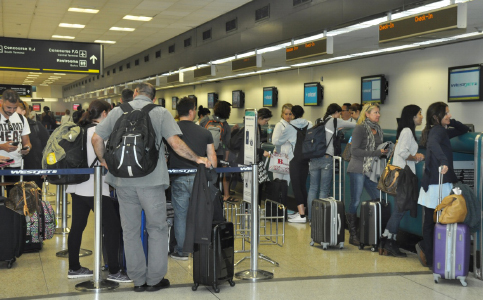Success of Miami hotels a barrier to international groups
Advertisement

International group travel to Miami is facing the challenge of high room rates caused by the area’s success as a leisure destination.
High prices for hotel blocks in the travel group business and long delays in visa processing are slowing growth of sales for international groups, says David Whitaker, president and CEO of the Greater Miami Convention & Visitors Bureau.
As of May, the average daily rate for Miami-Dade hotels was $270.62, up 15.7% from May 2021. Surfside and Bal Harbour are highest at $817.82, up 21.8% since last year.
Revenue per available room in Miami Dade is about $195.59, up 12.7% since last year. Surfside, Bal Harbour and Miami Beach also top the list as of May, according to STR.
“One of our challenges is our own success,” said bureau CCO Rolando Aedo. “Because of our success as the destination, our hotels are able to charge very high room rates in general, so meeting planners for group business travel are looking to do contracts for several hundred – and sometimes several thousand – rooms on behalf of the group or the association, and it’s very difficult for them to give low price rooms, so it’s kind of a paradox.”
From January through March, Miami International Airport had for almost 1.7 million international arrivals and about 3.6 million domestic. International travel has surged 113% compared to last year but still lags 15% behind 2019.
As of June 15, 40.7% of arrivals in MIA were international. April 2 and 3 had the highest percentage of international arrivals since the first week of the year, at 47.4% and 47.2%.
“International travel, in general, because of the pandemic, has been the one area of our overall visitor industry that has been the slowest to recover,” Mr. Aedo said. “When you look at our domestic leisure travel, it has come back really strong, but group travel took longer, and it’s now just starting up.”
Miami-Dade hotels, especially in Miami Beach, relied on leisure business to stay afloat during the pandemic, he explained. Demand grew due to closures in other areas of the US, allowing Miami area hotels to raise prices. “And while that’s great for the county because those high room rates generate sales and tourist taxes, which support a lot of our public projects, it does make it significantly more challenging when trying to put together blocks of hotel rooms at certain low prices for conventions that may be coming several years from today.”
Hotels, he said, face the challenge of whether to make the long-term commitment to give a number of rooms at a discount or to hold those rooms and sell them for more when the traveling business group arrives.
“Our success right now as a destination, and since the pandemic, has been driven primarily by the domestic leisure business,” Mr. Aedo said, but he foresees a speed-up of the international market after the Biden administration on June 12 lifted requirements for international travelers to test negative for Covid-19 before boarding a flight to the US.
“We’re hoping that towards the end of this year, we’re going to see a return to the historical balance of travelers to Miami between international and domestic,” he said; “which has typically been about 50% each.”
“Our challenge now is to maintain the larger market share that we’re able to secure from the domestic travelers and recapture the international market share as other countries open up,” Mr. Aedo said. “When looking at our latest hotel numbers, the gross revenue of the hotels in Greater Miami is up by 162% compared to last year, which is dramatic. And that’s been driven by the domestic leisure business.”


